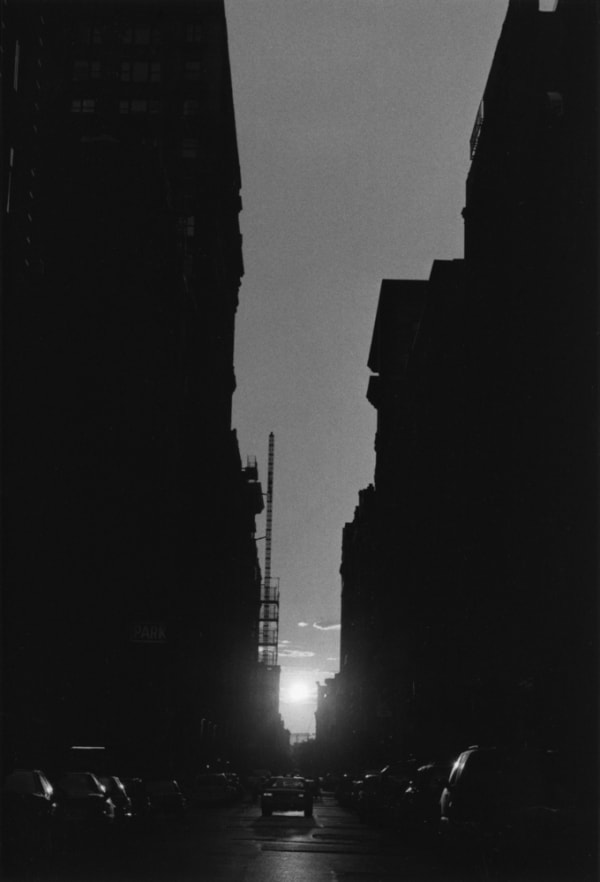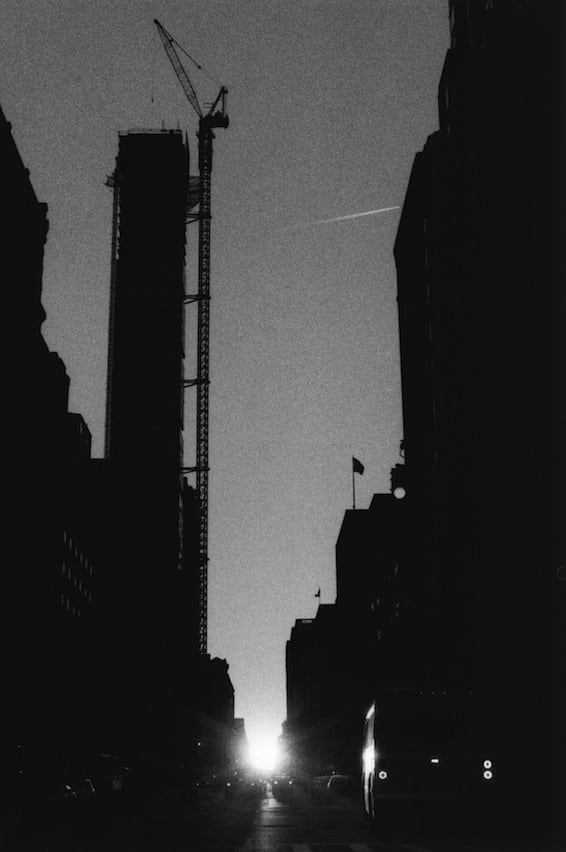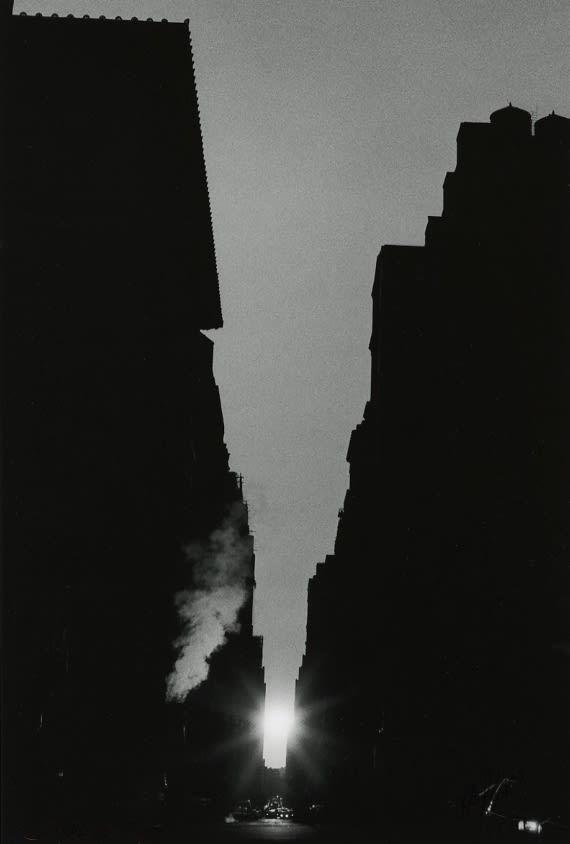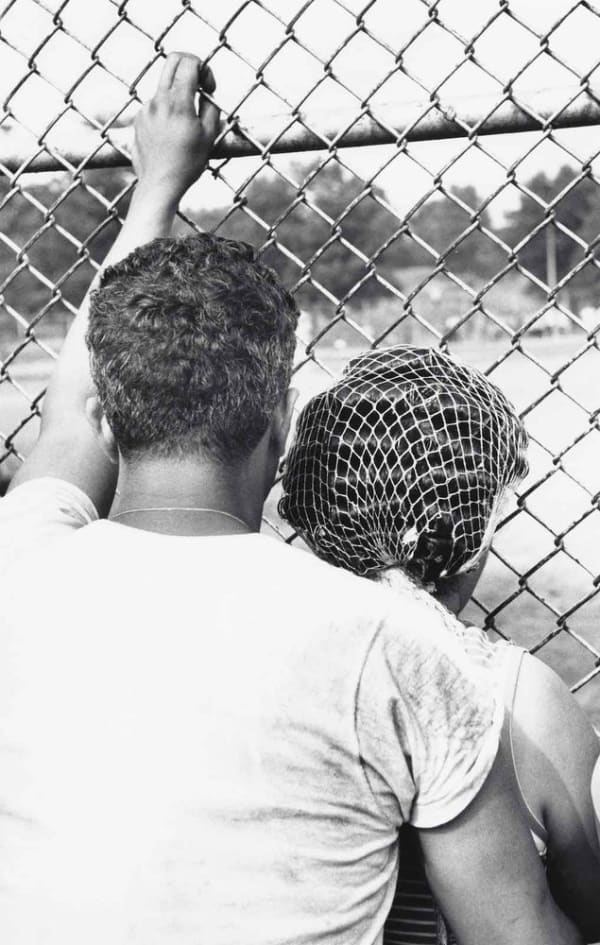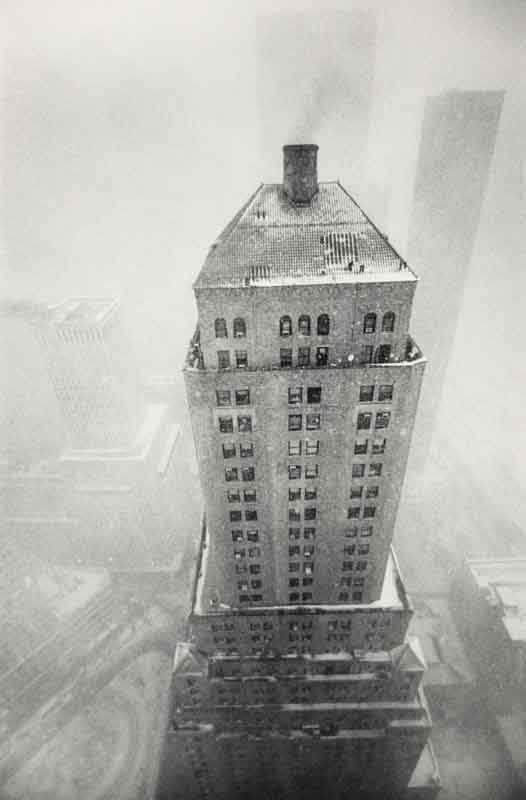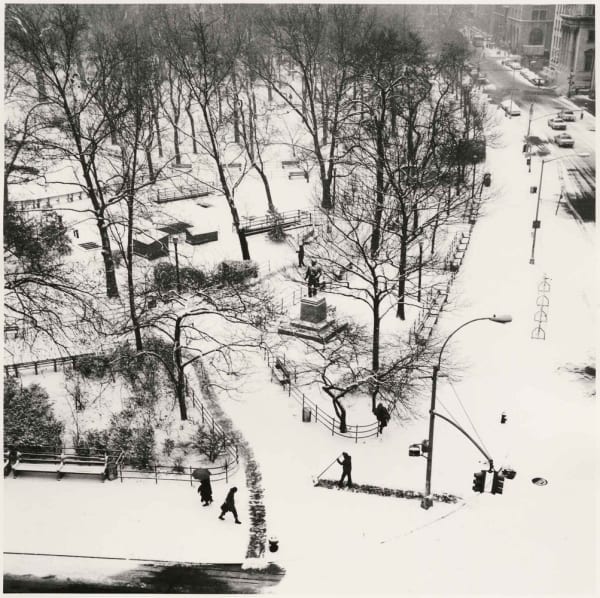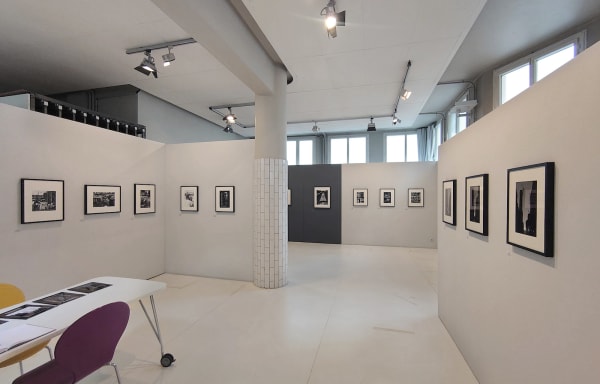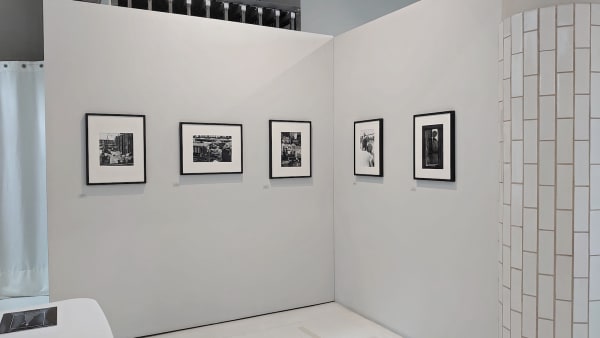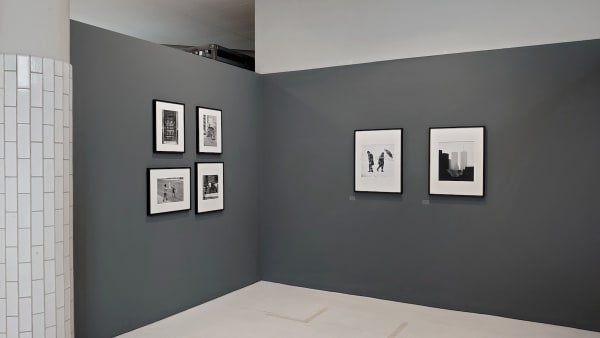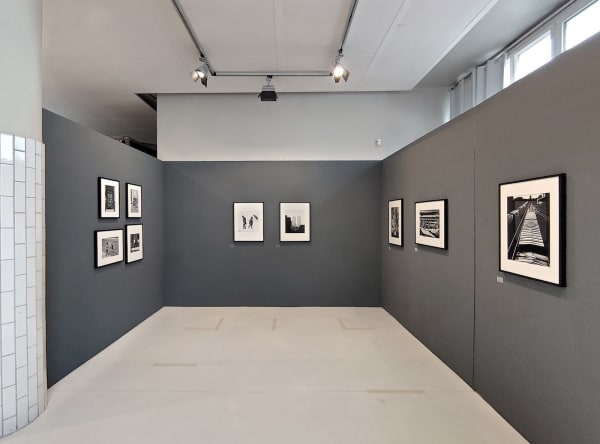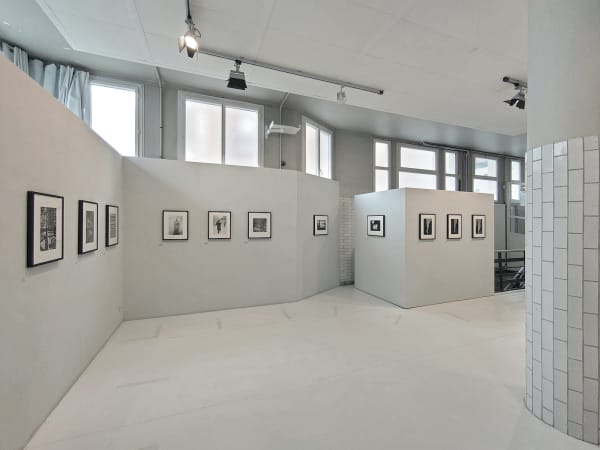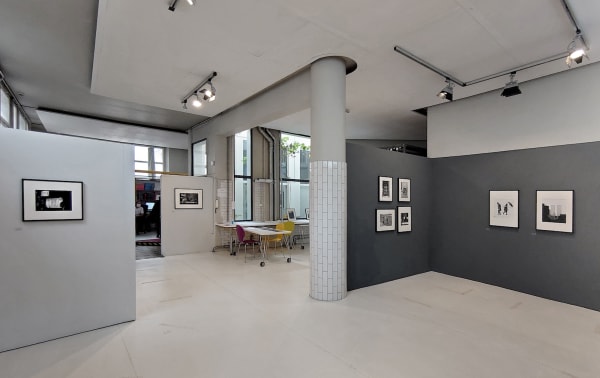Sid Kaplan, New York Rhythm
We are very pleased to welcome to the gallery, with the complicity of Deborah Bell, Sid Kaplan?s first solo exhibition in France. This 82-year-old young man has never stopped wandering the streets of his New York City, the Lower East Side, where the misery is not picturesque. His photographs are simple. Nothing sensational or anecdotal. Sid Kaplan searches, walks around. Walls, marks, children?s games, the life of a square or a lost cloud on the edge of a skyscraper. Very sensitive to his « side steps», we hope that you will share our enthusiasm for this photographic work which is too little recognized.
-
 Sid Kaplan, Sunset #30, 1990s
Sid Kaplan, Sunset #30, 1990s -
 Sid KaplanArcade, Times Square, NYCTirage gélatino-argentique postérieur, réalisé par l'artiste24,5 x 24,5 cm
Sid KaplanArcade, Times Square, NYCTirage gélatino-argentique postérieur, réalisé par l'artiste24,5 x 24,5 cm
9.45 x 9.45 in
Dim. papier: 35,6 x 28 cm -
 Sid KaplanSouth Bronx, NYCTirage gélatino-argentique postérieur, réalisé par l'artiste24,8 x 24 cm
Sid KaplanSouth Bronx, NYCTirage gélatino-argentique postérieur, réalisé par l'artiste24,8 x 24 cm
9.45 x 9.45 in
Dim. papier: 35,6 x 28 cm -
 Sid Kaplan, New York City, 1955
Sid Kaplan, New York City, 1955
-
 Sid KaplanNew York CityTirage gélatino-argentique postérieur, réalisé par l'artiste22 x 32,8 cm
Sid KaplanNew York CityTirage gélatino-argentique postérieur, réalisé par l'artiste22 x 32,8 cm
8.66 x 12.6 in
Dim. papier: 35,6 x 28 cm -
 Sid Kaplan, Tops of box cars on tracks, Minneapolis, 1986
Sid Kaplan, Tops of box cars on tracks, Minneapolis, 1986 -
 Sid KaplanBlurry view of train and building, windows at night, ChicagoTirage gélatino-argentique d'époque, réalisé par l'artiste45,4 x 30,3 cm
Sid KaplanBlurry view of train and building, windows at night, ChicagoTirage gélatino-argentique d'époque, réalisé par l'artiste45,4 x 30,3 cm
17.72 x 11.81 in
Dim. papier: 50,8 x 40,6 cm -
 Sid KaplanNew York CityTirage gélatino-argentique d'époque, réalisé par l'artiste35 x 35,8 cm
Sid KaplanNew York CityTirage gélatino-argentique d'époque, réalisé par l'artiste35 x 35,8 cm
13.78 x 13.78 in
Dim. papier: 50,8 x 40,6 cm
-
 Sid KaplanPaper lanterns, Long Island City, New York CityTirage gélatino-argentique postérieur, réalisé par l'artiste31,4 x 40,3 cm
Sid KaplanPaper lanterns, Long Island City, New York CityTirage gélatino-argentique postérieur, réalisé par l'artiste31,4 x 40,3 cm
12.2 x 15.75 in
Dim. papier: 40,6 x 50,8 cm -
 Sid KaplanNew York CityTirage gélatino-argentique postérieur, réalisé par l'artiste25,3 x 25,3 cm
Sid KaplanNew York CityTirage gélatino-argentique postérieur, réalisé par l'artiste25,3 x 25,3 cm
9.84 x 9.84 in
Dim. papier: 35,6 x 28 cm -
 Sid Kaplan, New York City, 1953
Sid Kaplan, New York City, 1953 -
 Sid Kaplan, Sunset #36, 1990s
Sid Kaplan, Sunset #36, 1990s
-
 Sid Kaplan, Sunset #38, 1990s
Sid Kaplan, Sunset #38, 1990s -
 Sid Kaplan, P.S. 190, New York City, 1955
Sid Kaplan, P.S. 190, New York City, 1955 -
 Sid KaplanNew York CityTirage gélatino-argentique postérieur, réalisé par l'artiste31,2 x 20,7 cm
Sid KaplanNew York CityTirage gélatino-argentique postérieur, réalisé par l'artiste31,2 x 20,7 cm
12.2 x 7.87 in
Dim. papier: 35,6 x 28 cm -
 Sid KaplanNew York CityTirage gélatino-argentique postérieur, réalisé par l'artiste31,7 x 21,5 cm
Sid KaplanNew York CityTirage gélatino-argentique postérieur, réalisé par l'artiste31,7 x 21,5 cm
12.2 x 8.27 in
Dim. papier: 35,6 x 28 cm
-
 Sid Kaplan, New York City, 1955
Sid Kaplan, New York City, 1955 -
 Sid KaplanWilliamsburg Bridge Reconstruction, New York CityTirage gélatino-argentique, réalisé par l'artiste44,8 x 30,4 cm
Sid KaplanWilliamsburg Bridge Reconstruction, New York CityTirage gélatino-argentique, réalisé par l'artiste44,8 x 30,4 cm
17.32 x 11.81 in
Dim. papier: 50,8 x 40,6 cm -
 Sid KaplanWorld Trade Center and bird in sky, Lower East Side, New York CityTirage gélatino-argentique d'époque, réalisé par l'artiste38,4 x 33,7 cm
Sid KaplanWorld Trade Center and bird in sky, Lower East Side, New York CityTirage gélatino-argentique d'époque, réalisé par l'artiste38,4 x 33,7 cm
14.96 x 12.99 in
Dim. papier: 50,8 x 40,6 cm -
 Sid KaplanDeconstruction of West Side Highway, New York CityTirage gélatino-argentique d'époque, réalisé par l'artiste32,2 x 25,2 cm
Sid KaplanDeconstruction of West Side Highway, New York CityTirage gélatino-argentique d'époque, réalisé par l'artiste32,2 x 25,2 cm
12.6 x 9.84 in
Dim. papier: 35,6 x 27,9 cm
-
 Sid KaplanOrchard Street, New York CityTirage gélatino-argentique d'époque, réalisé par l'artiste32 x 21 cm
Sid KaplanOrchard Street, New York CityTirage gélatino-argentique d'époque, réalisé par l'artiste32 x 21 cm
12.6 x 8.27 in
Dim. papier: 35,6 x 27,9 cm -
 Sid KaplanBronx, New YorkTirage gélatino-argentique d'époque, réalisé par l'artiste32,7 x 22 cm
Sid KaplanBronx, New YorkTirage gélatino-argentique d'époque, réalisé par l'artiste32,7 x 22 cm
12.6 x 8.66 in
Dim. papier: 35,6 x 27,9 cm -
 Sid Kaplan, Bronx, NY, 1969
Sid Kaplan, Bronx, NY, 1969 -
 Sid Kaplan, Transportation Building, New York City, 2004
Sid Kaplan, Transportation Building, New York City, 2004
-
 Sid KaplanNew York CityTirage gélatino-argentique d'époque, réalisé par l'artiste32,1 x 22,5 cm
Sid KaplanNew York CityTirage gélatino-argentique d'époque, réalisé par l'artiste32,1 x 22,5 cm
12.6 x 8.66 in
Dim. papier: 35,6 x 27,9 cm -
 Sid KaplanBar, New York CityTirage gélatino-argentique d'époque, réalisé par l'artiste22 x 31,5 cm
Sid KaplanBar, New York CityTirage gélatino-argentique d'époque, réalisé par l'artiste22 x 31,5 cm
8.66 x 12.2 in
Dim. papier: 27,9 x 35,6 cm -
 Sid KaplanBronxTirage gélatino-argentique postérieur, réalisé par l'artiste31,6 x 21,1 cm
Sid KaplanBronxTirage gélatino-argentique postérieur, réalisé par l'artiste31,6 x 21,1 cm
12.2 x 8.27 x 0 in
Dim. papier: 35,6 x 27,9 cm -
 Sid Kaplan, Madison Square Park, New York City, 1977-79
Sid Kaplan, Madison Square Park, New York City, 1977-79
-

Paris : 4 sorties pour garder le moral
Sophie de Santis, Le Figaro, 27 October 2020 -

Photo : les 11 expositions à voir absolument à Paris en octobre
Frédérique Chapuis, Télérama, 14 October 2020 -
Sid Kaplan, New York Rhythm
Sarah Moroz, Blind Magazine, 14 October 2020 -
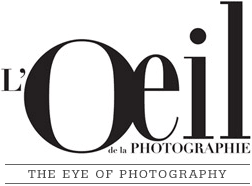
Sid Kaplan, New York Rhythm
L'Oeil de la Photographie, 7 October 2020
Looking at Sid Kaplan?s images is a rare experience. For although the eighty-two-year-old New York photographer still has a studio and dark room in the East Village, he has seen his career effectively hidden by the bulky legend of Mr. Frank, as Kaplan calls the man whose photographs he printed for thirty-five years.
So it was that Robert Frank (1924-2019), author of the 1958 book, The Americans, published in France by Robert Delpire, acted as the tree that hides the forest. And despite him declaring that, ?Sid Kaplan is not only an excellent printer, but also a very great photographer who is still too little known?, not much has changed. Kaplan would have to wait until 2005 for galleries to take an interest in his life?s work ? some 96,000 images ? and give it exposure and recognition.
You?ll fall for the charm and energy of the celebrated American streets. How though? What guides Kaplan?s gaze as he hangs out in a New York bar and notices a smoker overlooked by three screens? Or when the snow has the same effect on him as when he was a kid, and he goes out all excited to capture the magic of the whitewashed urban landscapes? When for two years he photographs an intersection situated at the corner of Madison Avenue, looking from a window? When he stares at the sunset, for ten years, through Manhattan?s skyscrapers after the winter and summer solstices?
Kaplan is a far cry from Gary Winogrand and his frenetic shooting, which captured not only women, but while he could, the energy and flux of the urban bazaar. Far from Lee Friedlander who, as a disciple of Walker Evans, tried to bring to life a social landscape. Far from Louis Faurer who favoured the fragility and doubt of the anonymous people he met, often at night. From Diane Arbus whose portraits reveal the devil hiding in each of us.
Sid Kaplan is not in a rush to snap photos; he?s not looking for the golden mean. As he explained to his gallerist Deborah Bell, ?For me, the best way of practicing photography is to do it in my free time, like Jacques-Henri Lartigue or Alfred Stieglitz. I never wanted to have a job that put me at the mercy of artistic directors and deadlines. That would have driven me crazy.? To his colleague, the French printer Guillaume Geneste, who wrote the book Le tirage à mains nues [Bare-handed Printing], which was recently published by Éditions lamaindonne, he maintained that, ?I knew I didn?t want to be in a studio. I just wanted to be alone with my camera and walk around, taking my own photos.?
When and where did his desire for photography originate? In the south Bronx where his Jewish family from Eastern Europe had taken refuge. Then, at the age of fourteen, chance would have it that he met Weegee. That?s when he said he became ?hypnotised, drawn as if to a drug? when for the first time he discovered an image taking shape in the developing tank.
Eugene Smith became his neighbour. Ralph Gibson introduced him to Robert Frank, ?a paying client?. Meanwhile, having to earn a living, the young man began working for Compo, Manhattan?s most prestigious photography lab. There he spent his life in the dark room. But through washing, glazing, drying the prints, his eye continued to develop.
While at Compo, he hobnobbed with the most sought-after photographers of the time, including the contributors to The Family of Man exhibition, which spread across the whole world, the FSA (Farm Security Administration) team, photographers at the Magnum agency, including Cornell Capa, who had him print his brother Robert?s photos, and Lou Bernstein at ICP, Philippe Halsman, the poet Allen Ginsberg, and the list goes on?
A number of the photographers were very active in The Photo League, which eventually fell victim to McCarthyism, leading to its dissolution. They were reporters and photojournalists with not only artistic concerns, but social ones as well. They wanted to bear witness. Not true of Sid Kaplan. Growing up in the Bronx, he certainly new poverty, he is certainly steeped in the Jewish culture of Eastern Europe, and he barely ever leaves the Lower East Side, but he doesn?t in the slightest feel as though he has a mission. Except maybe to transmit his fantastic know-how as a black-and-white printer to New York?s School of Visual Arts, where he teaches.
Lines in space, high luminosity, traces of a long-gone New York, a street scene with kids, a passing cloud? Sid Kaplan the documentarist humbly relishes what would have thrilled André Kertész. The human doesn?t interest him all that much. He can?t be bothered. But most of all, nothing is off-limits for him. He isn?t afraid of being eclectic, which in him has a force that keeps him far, very far indeed, from the anecdotal.
Magali Jauffret
Art Critic

